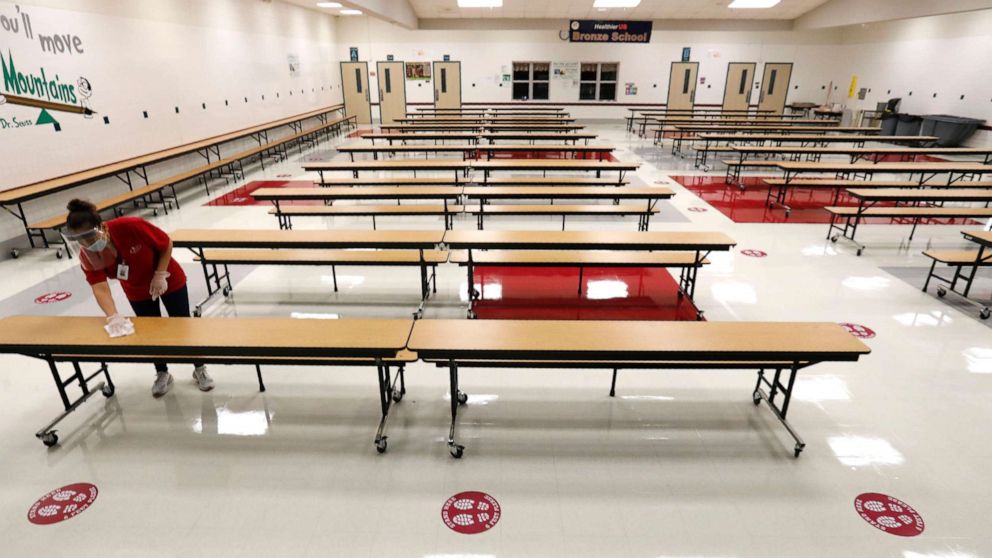Majority of public schools have physical barriers that limit access for people with disabilities: Report
The report found things like inaccessible door handles and steep ramps
A new report published on Friday revealed a majority of public schools across the United States have physical barriers that potentially limit access for individuals with disabilities.
Nearly two-thirds of public schools contained things like inaccessible door handles, steep ramps, playground barriers and door vestibules that limit accessibility, the report said.
"According to our national survey, an estimated 63 percent of school districts have barriers that may limit access for people with disabilities in a quarter or more of their school facilities," the report published by the Government Accountability Office said.
"Additionally, we estimated that 17 percent of districts nationwide—enrolling over 16 million students— have one or more schools that are not typically attended by students with physical disabilities due to the number of barriers."
"Sadly, this GAO report shows that 30 years after the Americans with Disabilities Act was signed into law, its promise has yet to fully be realized," House Education and Labor Committee Chairman Bobby Scott said in a statement, responding to the report.
In the report, schools cited funding constraints as the main reason for not improving facilities' accessibility, although it said an estimated "70 percent of school districts have some plans to improve the physical accessibility of their school facilities" in the next three years.
However, with states facing potential budget shortfalls due to COVID-19, there could be more roadblocks for schools looking to improve accessibility.
According to projections by the Center on Budget and Policy Priorities, states could be looking at an estimated "$555 billion in shortfalls over state fiscal years 2020-2022."
"Without more federal aid, cash-strapped states — which must balance their budgets each year — likely will continue cutting school funding, forcing more layoffs and other cuts in school support," said Michael Leachman, CBPP's vice president of state fiscal policy.
According to GAO, schools that the agency observed with the most barriers were more than 25 years old and faced more sweeping issues concerning the state of the facilities.
"For example, nearly all district officials we interviewed noted that keeping their school facilities warm, dry, and safe are among their highest priorities," the report said.
Last month, GAO issued a report that included a national survey, which found that "about half (an estimated 54 percent) of public school districts need to update or replace multiple building systems or features in their schools."
"This is the now second GAO report in two months that identifies the need for significant investment in improving school facilities," Scott said, noting that "the devastating impact of COVID-19 on school resources is putting these necessary improvements at risk."
"It is clear that the Senate must pass both the Heroes Act and the Moving Forward Act, which will provide states, localities, and school districts the resources they need to make schools safe and accessible for all students," he added.

The ADA prohibits disability discrimination, including in schools, and is enforced by the U.S. Justice Department.
In response to the report, Democratic Rep. Jose Serrano of New York said the Justice Department has "failed" to provide "technical assistance and guidance" to help school districts with interpreting the Americans with Disabilities Act.
"Every student deserves equal access to a quality public education under the law," he said in a statement.
"This is an issue that not only limits our students' full potential, but also the full participation of family members, teachers, and staff with physical disabilities in a public school facility. The report is clear: the federal government must do more to provide basic tools to help schools become compliant and enforce this vital law," Serrano added.
In 2015, the Southern District of New York published a report on the accessibility of schools in New York City and found that 83% of elementary schools were not "fully accessible."
A letter penned by members of Congress in 2018 requesting the GAO analysis, cited the 2015 report, and noted that this "places an undue burden on these students and their families, especially those living in underserved communities of color that continue facing other systemic barriers in most aspects of their lives."
Editor's note: An outdated Center on Budget and Policy Priorities projection has been updated.




